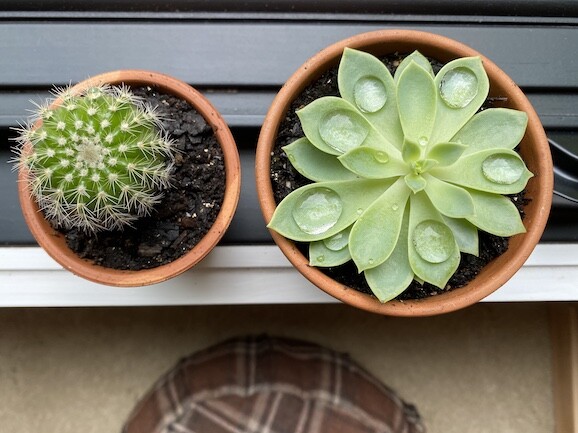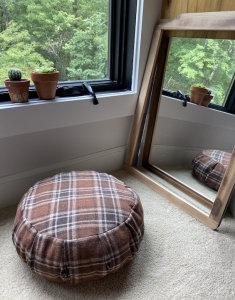
The following post was written by Global Gap Year Fellow Halden Levin.
Dear Reader,
You ask, “Where are you? Where are you going?” I respond, “I am sitting, facing the window. I cannot feel my foot, and my body is fighting sleep, but I am not thinking, not bothered by my thoughts, not bothered by anything. I feel present. I am here.”
I had plans and have plans, and everything is still quite uncertain. Originally, I was going to spend my whole year in Kaohsiung, Taiwan, learning Mandarin Chinese at the Wenzao Ursuline University of Languages through the National Security Language Initiative for Youth (NSLI-Y) and complete a service placement during my time in Taiwan or the following summer with the Global Gap Year Fellowship (GGYF). But due to COVID-19, my plans have changed.
Upon discovering NSLI-Y would go virtual until January 2021 at the earliest, I began reaching out to Zen Buddhist centers/temples/monasteries across the United States. At the beginning of August, I received a reply. Nyoze Kwong, Vice Abbot of the Sonoma Mountain Zen Center, invited me to talk about my interests and plans; that is how I ended up sitting here in silence.
Back in May, I sat down with an empty Google Doc and wrote down my gap year goals: to further my study of Mandarin Chinese, to further engage with and support the disability community, and to examine and develop my own spiritual and religious beliefs.
Although brought up Lutheran, beginning with my study of Mandarin Chinese, I became interested in Zen Buddhism (Zen Buddhism originated in China). With NSLI-Y and GGYF funding and support, I knew this year was the year I would begin practicing Zen Buddhism, and depending on my research and experience, I will continue practicing into the future.
After my conversation with Nyoze, I began sitting zazen, seated meditation, every morning and every night Monday through Friday for thirty minutes each time and joining Saturday Community, including thirty minutes of zazen and a Dharma Talk, on, well, Saturday. During the day, I listen to one or two episodes from The Zen Studies Podcast hosted by Domyo Burk, and a few times a week, I read Zen Mind, Beginner’s Mind by Shunryu Suzuki.
Based on the knowledge I have acquired over a month of studying and practicing Zen, at least within Japan, there are two main types of Zen Buddhism: Soto and Rinzai (I’m practicing Soto Zen Buddhism). Zazen is a central part of both types, so Zen Buddhism is considered a more egalitarian form of Buddhism since studying scriptures isn’t as central to Zen practice. The main difference between Soto and Rinzai Zen is that Soto Zen Buddhism focuses more on the practice of not-thinking during zazen, while Rinzai Zen Buddhism focuses on reflecting on koans, Buddhist teachings, during zazen. Based on my understanding, the goal of Zen Buddhism is enlightenment or, in the words of Shunryu Suzuki, to maintain a beginner’s mind.
Ango, three-months of intense Zen study, which was abbreviated and turned virtual for the Sonoma Mountain Zen Center, just concluded. As a beginner, I took part and observed ango and parts of sesshin, a week focused on intensively practicing zazen. Małgosia “Myoju” Sieradzka-Imhoff from the Kannon Zen Center served as Shuso, the head student, and chose the theme:
The Courage of Patch-Robed Monks
“The courage of a fisherman is to enter the water without avoiding deep sea dragons. The courage of a hunter is to travel the earth without avoiding tigers. The courage of a general is to face the drawn sword before him and see death as just like life. What is the courage of patch-robed monks?”
After a pause, Dogen said: “Spread out your bedding and sleep; set out your bowls and eat rice; exhale through your nostrils; radiate light from your eyes. Do you know there is something that goes beyond? With vitality, eat lots of rice and then use the toilet. Transcend your personal prediction of future Buddhahood from Gautama.”
From Dogen’s Extensive Record: A translation of the Eihei Koroku, translated by Taigen Dai Leighton and Shohaku Okumura
Although I am still in Chapel Hill, I am now connected to an international community, multiple sanghas, Buddhist communities, across the globe: the Sonoma Mountain Zen Center in Santa Rosa, California, the Kannon Zen Center in Warsaw, Poland, and the Natthagi Zen Center in Reykjavik, Iceland. I may still be able to travel to Santa Rosa, California, next summer to serve as a volunteer-work resident and to Kaohsiung, Taiwan, in January to continue studying Mandarin Chinese, but until then, I invite you to sit with me and have the courage to live your life, being present in every moment.
Word of the Month

Zafu (n.) meditation cushion; brown plaid fabric stuffed with fabric scraps, bits of old t-shirts, and leftover polyester filling.
Gassho,
Halden Levin
P.S. Beginning on September 14th, I will begin taking virtual Chinese classes through NSLI-Y. A few days ago, I spoke with Spring, our charismatic NSLI-Y coordinator in Taiwan, to brush up on my Chinese. Although I am still in America, I will try my best to immerse myself in Chinese with Chinese music, podcasts, shows, and news, combined with diligent study.
Also in September, I will begin serving as a Virtual Student Federal Service intern for the “Fostering Inclusion in Legal Systems – Regional Comparative Analysis” project with the International Disability Rights team in the State Department’s Bureau of Democracy, Human Rights, and Labor’s Office of Multilateral and Global Affairs (phew… that’s quite a mouthful).
